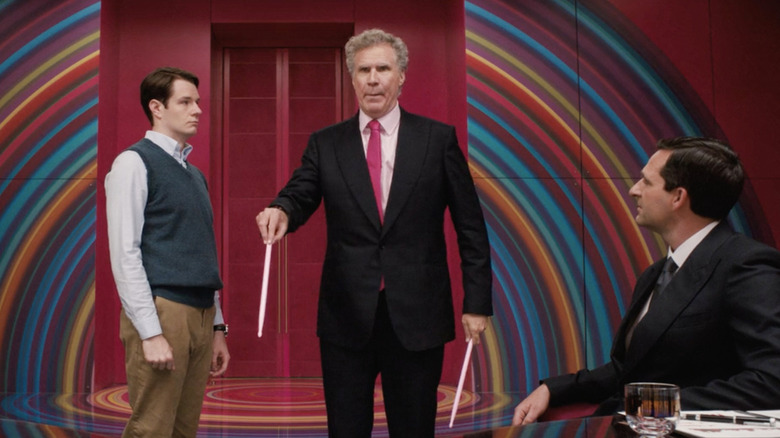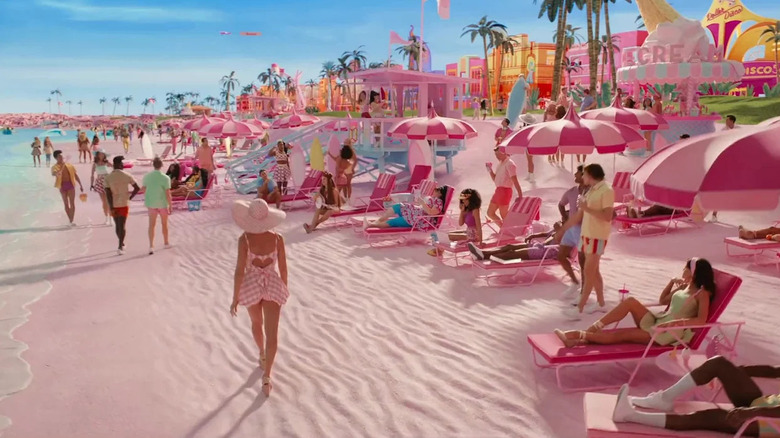The Visual Effects Of Barbie's Mattel Boardroom Were Simple - Except For One Thing
We've written a lot here at /Film about how water can be a director's biggest nightmare, but it's also worth mentioning those pesky mirrors. Their reflective surfaces make it extra difficult to avoid the cameraman and other crew members accidentally popping up in the shot. It's something that really complicated the filming of franchises like "The Matrix," where half the characters are wearing reflective sunglasses most of the time. It also made that one mirror room sequence in "John Wick 2" nearly impossible to pull off.
The bright side of mirrors is that they do tend to make scenes look better. A room with mirrors looks more spacious than a room without them, and their reflections provide all sorts of opportunities for fun visual foreshadowing or thematic subtext. There's also the fun meta aspect of "how'd they pull this off?" for the audience. It's tough to figure out how Alfonso Cuarón moved the camera through that mirror in "Prisoner of Azkaban," but the trick did a lot to assure us that this movie was in the hand of a true professional.
The visual effects team of "Barbie" didn't do anything quite as fancy, but they faced their own mirror-y conundrum with their scenes in the Mattel boardroom. As VFX Supervisor Josephine Noh told Awards Radar last year, all the reflections in that room took "months and months" to deal with. "Reflections can look very different depending on the glass or perspective," she said. "We wanted to make it look believable but did some creative tweaks to make it more aesthetically pleasing."
Barbie is a beautifully-shot film in general
Mirrors might not sound like a massive visual effects challenge, but Noh explained that a room full of reflections was such a headache:
"Not only were there reflections for the windows themselves, but the whole board room is very shiny, so then the reflections of the windows were on the floor, the table, so we had to do secondary and tertiary reflections of the room itself, so there was the office, and we had to rebuild it all in CG. Then we would just try to match as close as we could, and then we would do it in layers. We had one layer for the windows, one for the floor, and one again for the table."
It's a ton of work for something that the average viewer likely wouldn't consciously notice as they watched the scene, but it's the same high-effort approach that distinguishes "Barbie" from so many mainstream four-quadrant movies of recent years. This is a movie that prioritizes practical effects over CGI, and makes sure the sets are properly lit. Some of the footage from the upcoming "Deadpool" movie might be so oddly dark that you can barely see the actors' faces, but nobody had trouble seeing anything in "Barbie."
As Noh also explained, the extra work in the Mattel boardroom helped to emphasize the "cold, dull, and inescapable" feeling of the rest of the cubicles in the Mattel building that the non-execs had to work in. The contrast helped to underline the movie's criticisms of corporate culture, avoiding the feeling that was a little too much of a commercial-turned-movie. "Barbie" may not have been the devastating critique of Mattel some viewers were hoping for, but it wasn't particularly deferent to the company either. It's an attitude that's reflected in nearly every aspect of the film, even down to some of those reflective surfaces.

